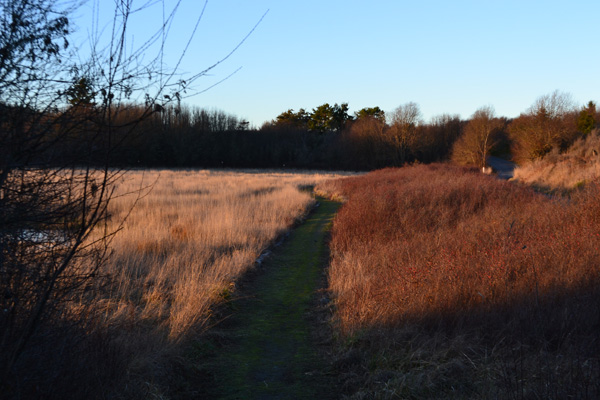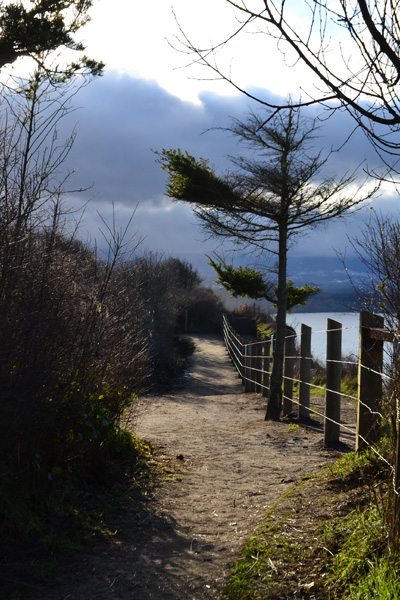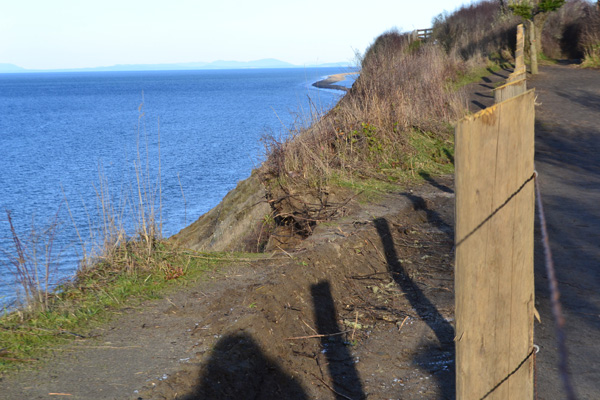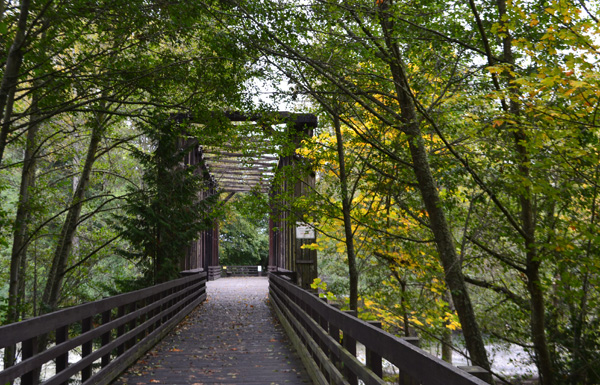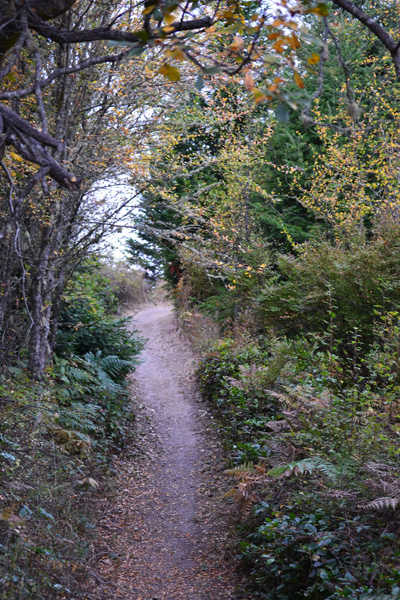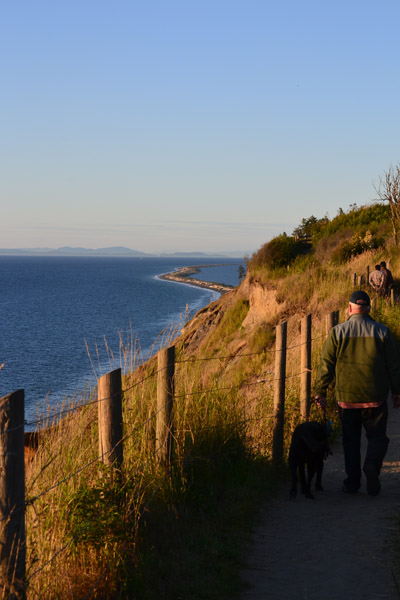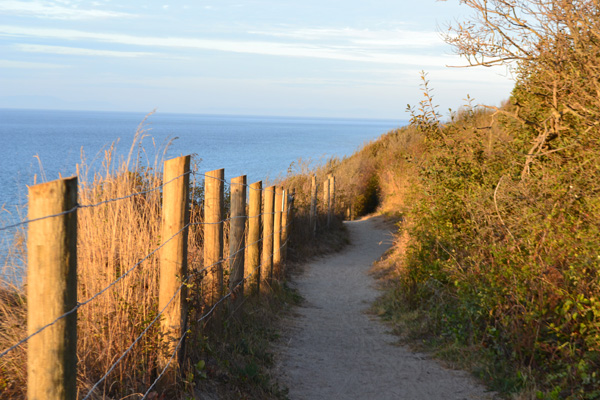
We love to walk to and along the bluffs overlooking the Strait of Juan de Fuca. On clear days the view extends west to Port Angeles and beyond and north to Vancouver Island and the San Juans. Lately, though, we’ve been looking down. As in, down the bluff just past the edge of the trail.
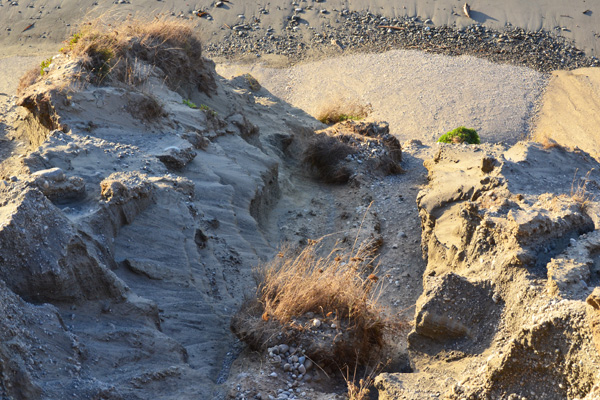
We began looking down because we heard the rush and tumble of sand and cobble in motion and one afternoon watched a steady flow, creating an alluvial fan as it landed on the beach. It’s hard to get a good perspective looking downward but what you’re seeing is active erosion on what’s typically a fairly vertical cliff. The two grassy chunks in the middle of this flow previously lived close to the top of the bluff.
There are already spots along the bluff trail where the fencing has been moved and the trail rerouted inward as nature has eaten into the sandy cliffs. We’re guessing it may not be long before we see changes in this part of the trail. We took a ranger-led walk a year or two ago where it was estimated that the bluffs around here may recede up to 18 inches a year.
